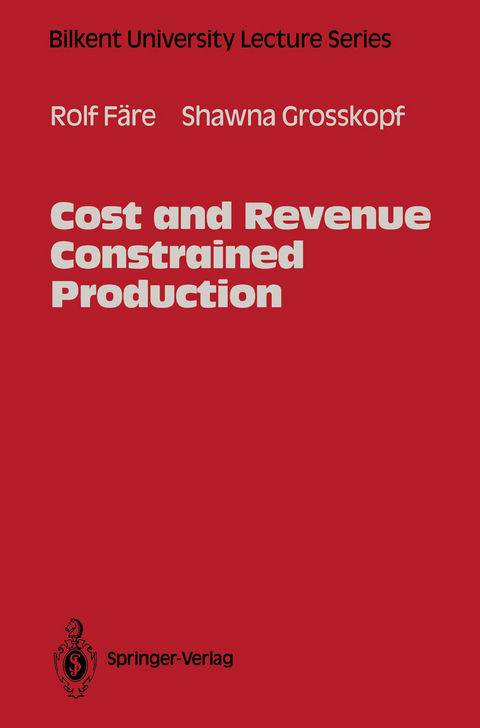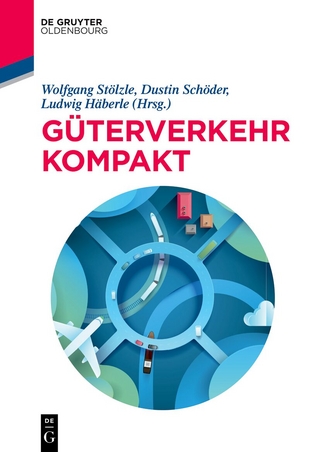
Cost and Revenue Constrained Production
Springer-Verlag New York Inc.
978-1-4612-7613-5 (ISBN)
The basic notion underlying this monograph - budget or revenue constrained models of production - we owe to Ronald W. Shephard, who recognized its fundamental importance in modeling behavior in a wide variety of settings including the service and public sector. Our endeavor here is to extend Shephard's earlier work in several directions while maintaining his axiomatic approach. Our contributions include an expanded set of duality results and a general bent toward empirical implementation: including various parameterizations, applications to efficiency and productivity measurement, and shadow pricing. We hope to provide those engaged in empirical work with some powerful and useful tools which have received relatively little attention. The nature of the material in this monograph is somewhat technical, however, the level of mathematical difficulty is standard. Although we have tried to keep the monograph fairly self-contained, we have also kept technical detail to a minimum in the body of the text. Many technical extensions appear as problems at the ends of Chapters. The reader is also referred to the notes at the end of each chapter for references to additional literature. A prepublication draft of this manuscript was used as lecture notes in a graduate course in production theory at the Department of Economics at Bilkent University. We thank our students as well as faculty members for their patience and interest. Special thanks go to Dean Togan, Zeynap Koksal and Ali Dogramaci for making our stay in Ankara not only productive, but also enjoyable.
1 Introduction.- 1.0 Motivation.- 1.1 Outline.- 2 Structure of the Direct and Cost and Revenue Restricted Technology.- 2.0 Introduction.- 2.1 The Parent Technology.- 2.2 The Cost Restricted Technology.- 2.3 The Parent and Indirect Technologies: A First Comparison.- 2.4 The Revenue Restricted Technology.- Appendix: Cost and Revenue Functions.- 2.P Problems.- Notes.- 3 Representations of Technology.- 3.0 Introduction.- 3.1 The Direct and Indirect Output Distance Functions.- 3.2 The Direct and Indirect Input Distance Functions.- 3.3 Piecewise Linear Models.- 3.P Problems.- Notes.- 4 Indirect Revenue Maximization, Indirect Cost Minimization and Profit Maximization.- 4.0 Introduction.- 4.1 Revenue Maximization.- 4.2 Cost Minimization.- 4.3 Profit Maximization.- Appendix: Cost and Revenue Dualities.- 4.P Problems.- Notes.- 5 Applications of Duality.- 5.0 Introduction.- 5.1 Dualities Between Direct and Indirect Production.- 5.2 Shadow Pricing Inputs and Outputs.- 5.3 Scale Elasticity and Returns to Scale.- 5.P Problems.- Notes.- 6 Efficiency Gauging.- 6.0 Introduction.- 6.1 Indirect Input and Output Technical Efficiency Measures.- 6.2 Decomposition of Indirect Efficiency.- 6.3 Calculating Efficiency: Nonparametric Approach.- 6.4 Calculating Efficiency: Parametric Approach.- 6.P Problems.- Notes.- 7 Productivity.- 7.0 Introduction.- 7.1 Malmquist Productivity Indexes.- 7.2 Piecewise Linear Calculation of Productivity.- 7.3 Parametric Calculation of Productivity.- 7.4 The Fisher Ideal Index Approach to Productivity Measurement.- 7.5 The Törnqvist Index Approach to Productivity Measurement.- Appendix: The Translog Identity.- 7.P Problems.- Notes.- Appendix A: Standard Notations and Mathematical Appendix.- References.
| Reihe/Serie | Bilkent University Lecture Series |
|---|---|
| Zusatzinfo | VIII, 170 p. |
| Verlagsort | New York, NY |
| Sprache | englisch |
| Maße | 155 x 235 mm |
| Themenwelt | Wirtschaft ► Betriebswirtschaft / Management ► Logistik / Produktion |
| Wirtschaft ► Betriebswirtschaft / Management ► Unternehmensführung / Management | |
| ISBN-10 | 1-4612-7613-6 / 1461276136 |
| ISBN-13 | 978-1-4612-7613-5 / 9781461276135 |
| Zustand | Neuware |
| Haben Sie eine Frage zum Produkt? |
aus dem Bereich


